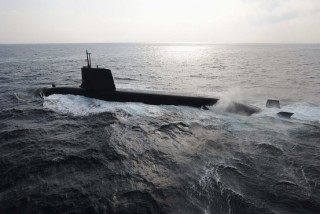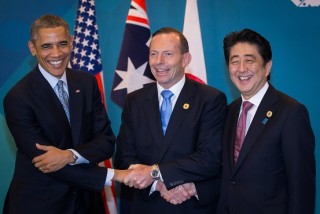Loading
Search
▼ Japan Gains Edge in Australia Submarine Deal
- Category:Other

WALL STREET JOURNAL
Australia said it wouldn’t hold a competitive tender for a 25 billion Australian dollar (US$21 billion) fleet of new conventional submarines, fueling speculation one of the Asia-Pacific’s biggest defense contracts will likely go to Japan.
In an Australian radio interview on Tuesday, Treasurer Joe Hockey said the country was seeking a submarine that was already operating—as opposed to the theoretical designs of some European manufacturers and new proposals from the government’s own naval shipyard, ASC, based in South Australia state.
Asked whether the submarine contract might be put to a free-to-all competitive tender, Mr. Hockey said such a process would likely take too long. “We need to make decisions now,” he said. “We don’t have time to go through a speculation process. We don’t have time for people to suggest they can build something that hasn’t been built.”
Mr. Hockey’s spokeswoman later said a more qualified tender, open to a handful of preselected manufacturers and thus quicker to complete, hadn’t been ruled out—leaving open the door to a number of German, French and Swedish firms that have already put forward proposals.
A major defense blueprint to be published in the first half of next year that will set forth Australia’s security priorities may affect the type of tender the government eventually adopts, but the urgency expressed by Mr. Hockey would right now seem to favor the Japanese, who have the advantage of proposing submarines with a proven operational capability.

Since the middle of the year, there have been rumors Canberra is leaning toward buying as many as 12 submarines from Japan in what would be Tokyo’s largest weapons sale since World War II. Mr. Hockey’s remarks make clear Australia is prepared to sidestep calls from within the government, and among a number of European submarine builders, for a competitive process.
The government is looking to replace six home-built Collins-class submarines with a new fleet twice that size, as it looks to ward off heightened regional security threats and protect a network of gas pipelines critical to the resource-rich country’s prosperity. The first of the aging Collins fleet—long plagued by reliability problems—is due to be retired in about 12 years.
Submarines are at the heart of a new arms race in Asia, as countries seek to hedge against Beijing’s recent assertiveness over territorial claims in the East and South China seas, and in the Indian Ocean. Australia has lately been deepening security ties with Japan, whose bid for the lucrative submarine contract appears to have gained traction following Prime Minister Shinzo Abe ’s visit to Canberra in July.
German submarine manufacturer ThyssenKrupp Marine Systems, France’s DCNS and Sweden’s SAAB Kockums are lobbying Prime Minister Tony Abbott ’s government for a chance to participate in a tender.
TKMS has proposed a bigger version of its Type 214 submarine—known as the Type 216, optimized for use in Australia’s vast ocean territories, but it hasn’t yet been built. DCNS has proposed a new conventionally powered version of its Barracuda nuclear-powered attack vessel. The French company last month opened an office in Canberra hoping to improve its chances of winning the contract.
Ever since Mr. Abe’s visit to sign a bilateral security agreement here, speculation has been building that Australia will buy Japan’s 4,200-ton Soryu, or Blue Dragon. Still, the Australian prime minister is under considerable pressure from within his own conservative government to build the new boats in Australia using foreign design-and-technical assistance. That path would likely favor the Germans over the Japanese, due to the country’s experience in setting up overseas production lines in Israel and elsewhere.
- December 2, 2014
- Comment (0)
- Trackback(0)

